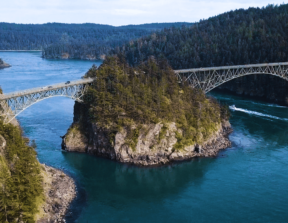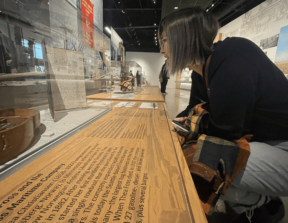Resource Library


Best Practice Report: Transforming Outdoor-Users into Outdoor-Participants
Use this for: inspiring new ideas for public outreach and engagement.
The Coastal Interpretive Center (CIC), located in Ocean Shores and serving all of Grays Harbor County, has for many years expected people to come to us:
- to come to our museum...
- to come inside our museum...
- to come inside our museum and engage with our museum exhibits.
However, as a cultural and natural resource organization, the CIC recognizes that many people engage with biology, geology, ecology, and anthropology in places that aren’t our museum. We need to meet people where they are. For that reason, we applied to the Maritime Washington Grant Program for support in expanding our community outreach and were awarded a grant. The CIC used grant funding to create what we call “Trailhead Tables” – setting up at popular outdoor access points on a weekend morning to accomplish three external objectives:
- to learn about outdoor user habits,
- to educate them about community stewardship, and
- to offer them opportunities to get engaged in the community.
We also had partnership and internal objectives for the program:
- to gather basic visitor use data,
- to understand common visitor themes and questions, and
- to demonstrate the CIC as a connector between federal and state agencies and individual members of the community.
Finally, and most broadly, we hoped that because our Trailhead Tables would place CIC staff and volunteers out in the community, more positive interactions with more people would drive interest in our other programs (e.g. our museum).
With this in mind, the CIC received approval from relevant land managers (Washington State Department of Natural Resources and Washington State Department of Fish and Wildlife). With Maritime Washington’s funding, we then applied to and received a further project grant from our local Grays Harbor Marine Resources Committee. We purchased supplies and equipment and created a regular schedule of four hour-long tabling events. The results of the Summer 2024 Trailhead Table project were surprising and have informed our Summer 2025 outreach planning and partner efforts.


Using the Damon Point Natural Area as an example, our quantitative and qualitative findings would not have been gained without the CIC’s Trailhead Table project. The total Damon Point user traffic far exceeded previous Department of Natural Resources estimates. The demographics of users changed significantly throughout the four hours of each Trailhead Table (notably: the user’s origin and the user’s preferred language). Many users did not understand what government agencies actually do in maintaining our shared cultural and natural resources. Trailhead Tables converted very few people into CIC museum visitors. Finally, users who were residents of Grays Harbor (and not already knowledgeable about the CIC) typically avoided the CIC table, whereas users who were visitors to Grays Harbor made a beeline to the CIC table. This last result was perhaps the most important in guiding future CIC planning: in talking with Grays Harbor residents, we discovered that many confused the CIC for a government agency and because of local suspicion of government agencies, they then chose to avoid the CIC table. By adding children’s activities (e.g. sand dollar painting), we became more successful in engaging Grays Harbor resident families (the majority of users).
The 2024 Trailhead Tables provided valuable insights to the CIC and our partners and convinced the CIC to substantially expand our outreach program in 2025. We will add four new Table locations spread further across Grays Harbor County (adding more partners in the process). We will no longer charge for our guided naturalist tours (another form of outreach), recognizing that many residents were most excited to engage with our Tables when we provided a free activity for children. We will recruit more volunteers to emphasize the CIC’s middleman position between government and community.
Support from Maritime Washington was essential in purchasing the equipment that made this outreach possible. We hope your organization will find our insights useful and can productively engage your public in a way that inspires greater community stewardship.










